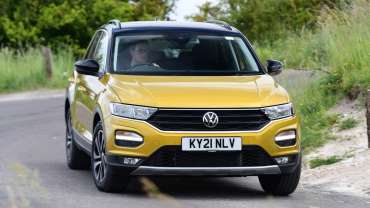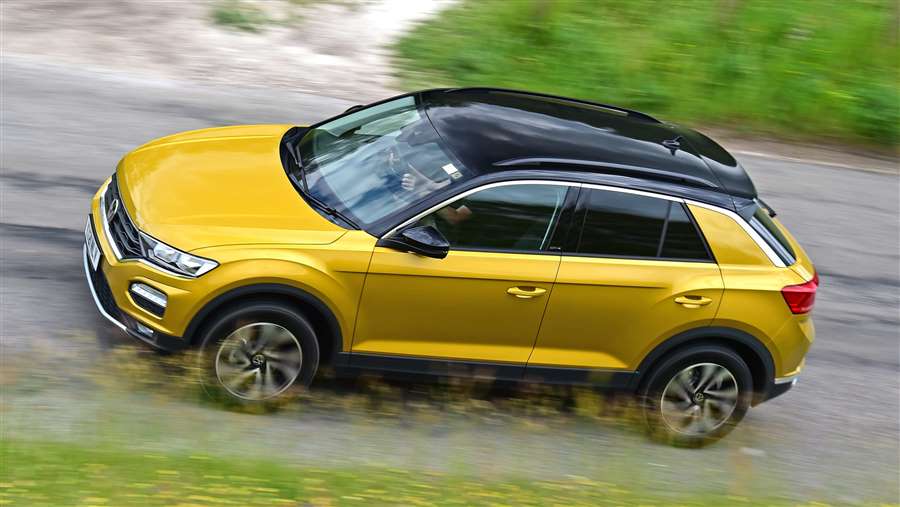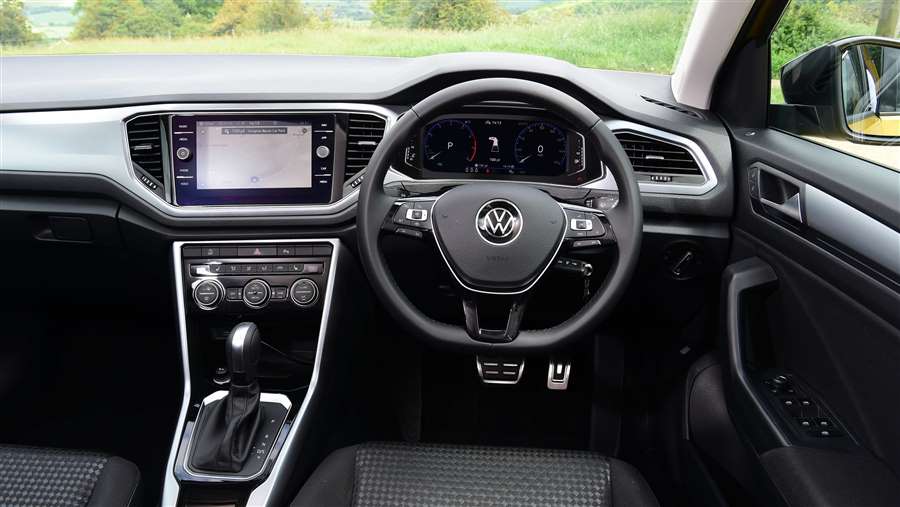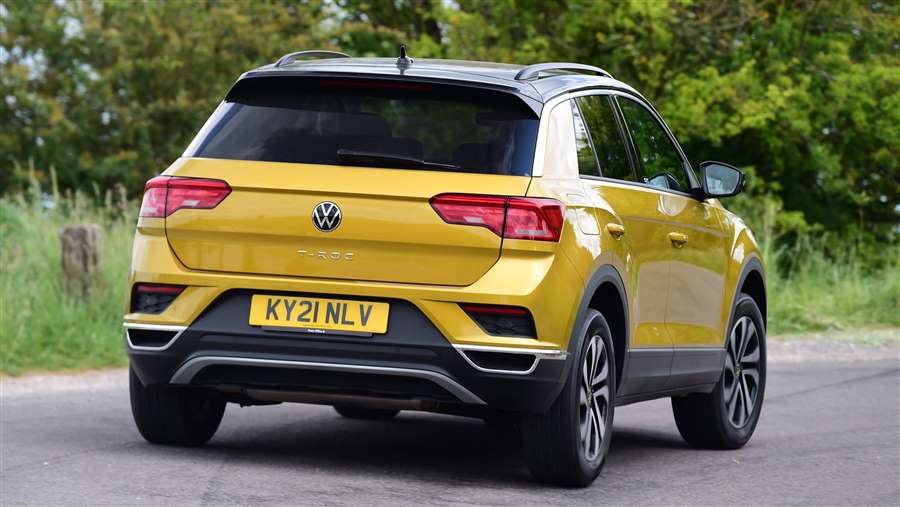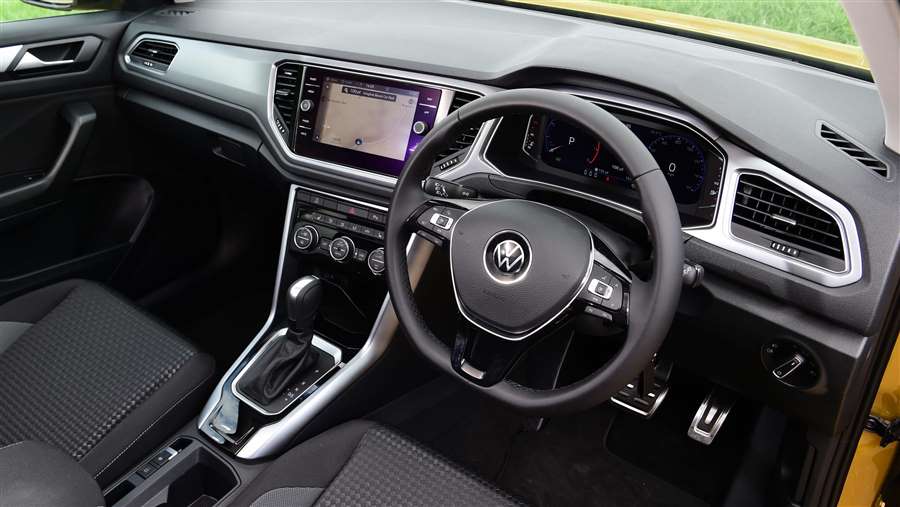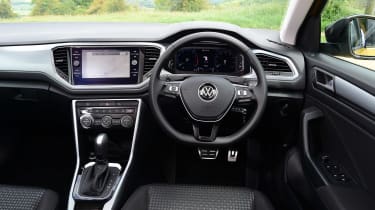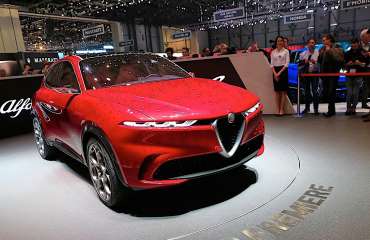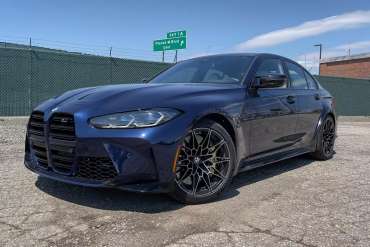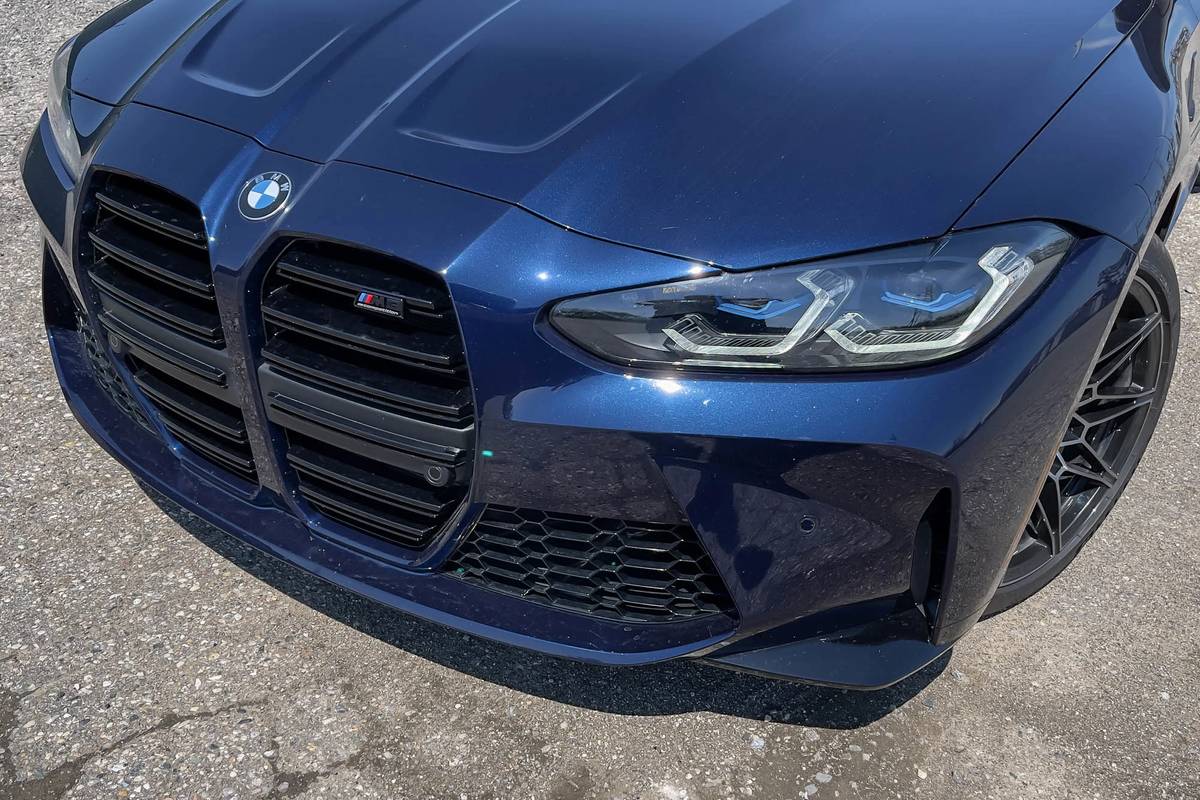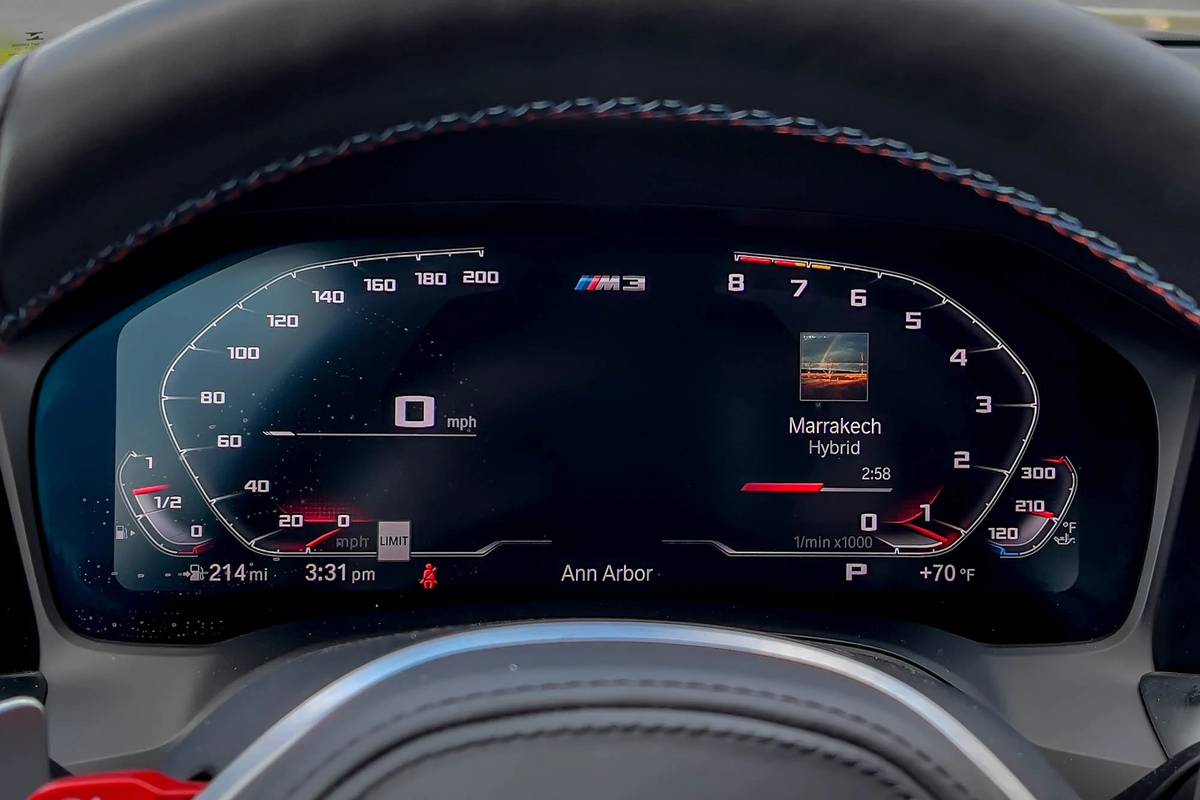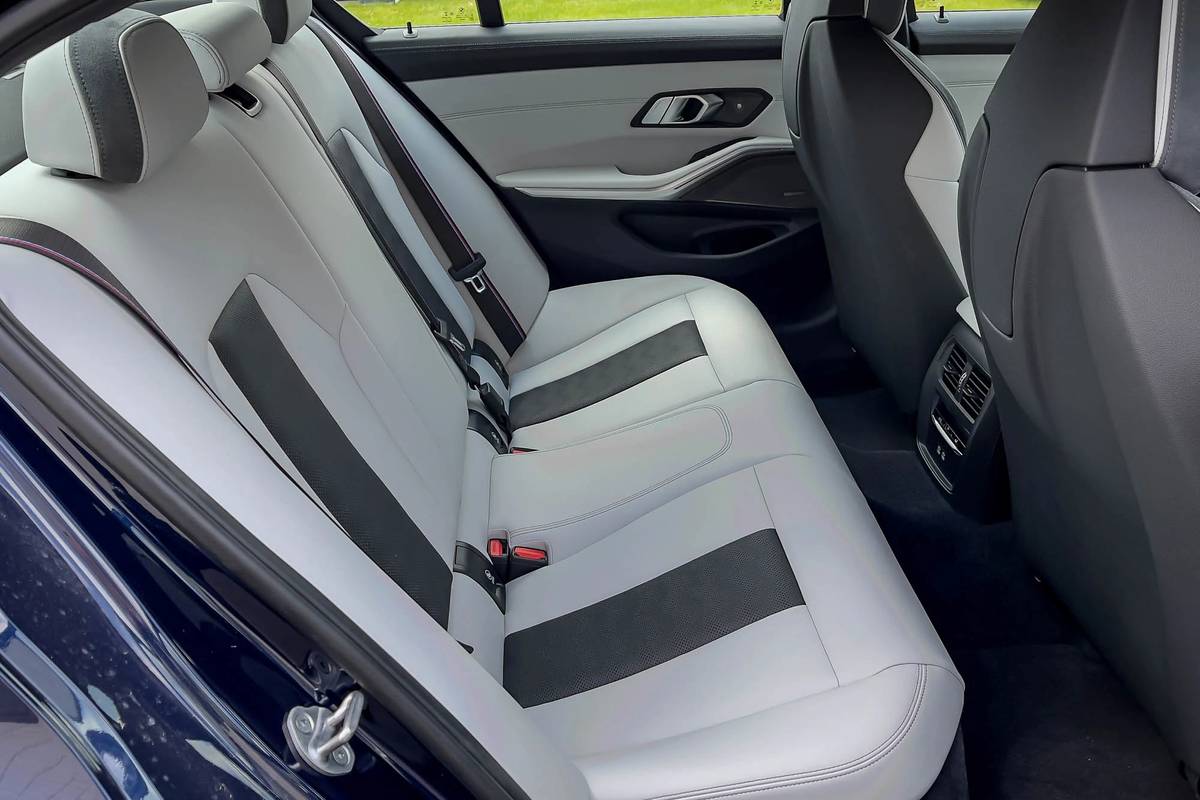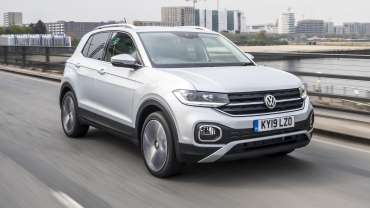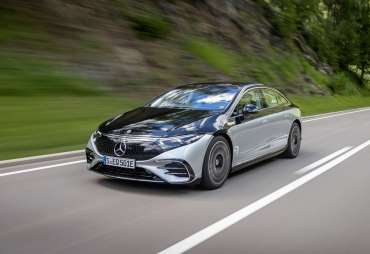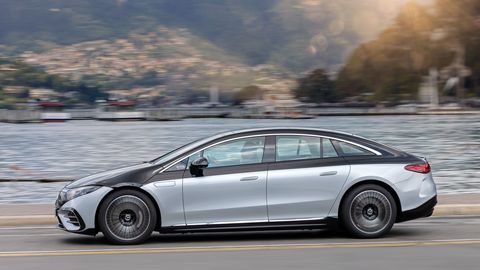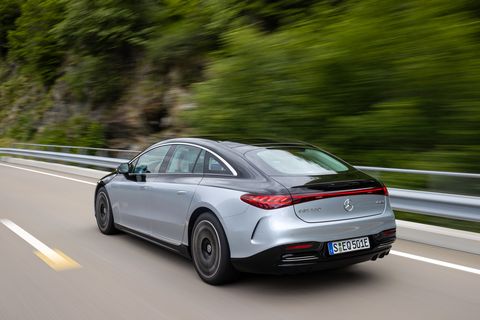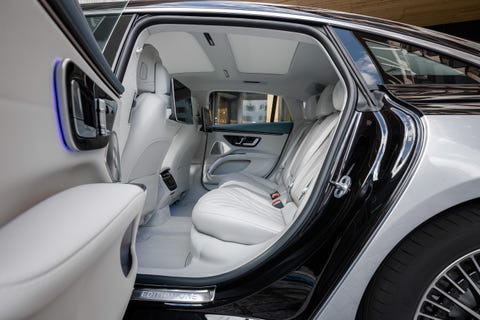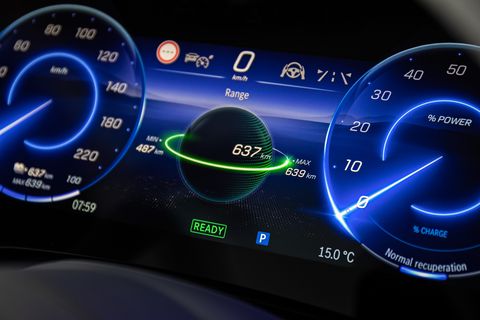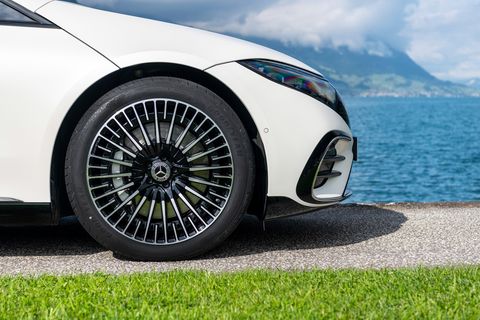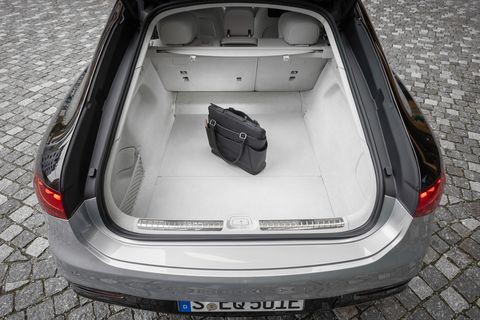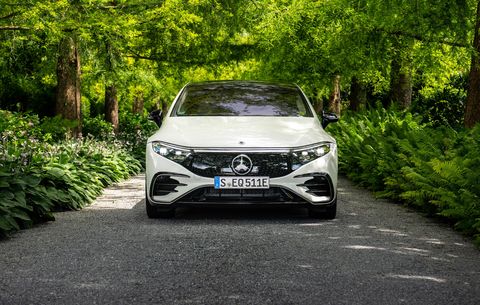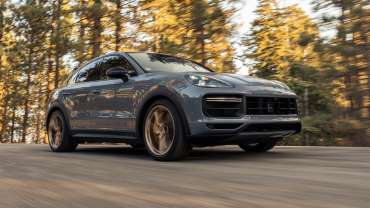“The Volkswagen T-Cross is one of the class leaders in the small SUV sector”
Volkswagen offers a wider choice of SUVs than most manufacturers, with six different models and more in the pipeline. The T-Cross is the smallest and cheapest, sitting below the T-Roc, Tiguan, Tiguan Allspace, the electric ID.4 and the flagship Touareg. It aims to capitalise on the current demand for compact yet practical SUVs, and joins a class saturated with excellent rivals, including the Ford Puma, Skoda Kamiq, Renault Captur, Nissan Juke, Hyundai Bayon and Citroen C3 Aircross.
The Volkswagen T-Cross is an all-new model, but under the skin it's very similar to the SEAT Arona, Volkswagen Polo and Skoda Fabia. It borrows some of its styling cues from the T-Roc, and looks to imitate the Touareg with its wide grille. Whichever angle you approach it from, the T-Cross is clearly from the VW stable, and does just enough to stand out in a sea of similarly sized rivals. Volkswagen concentrates on making smart-looking, well built, practical cars, and the T-Cross is simply the latest product of that approach.
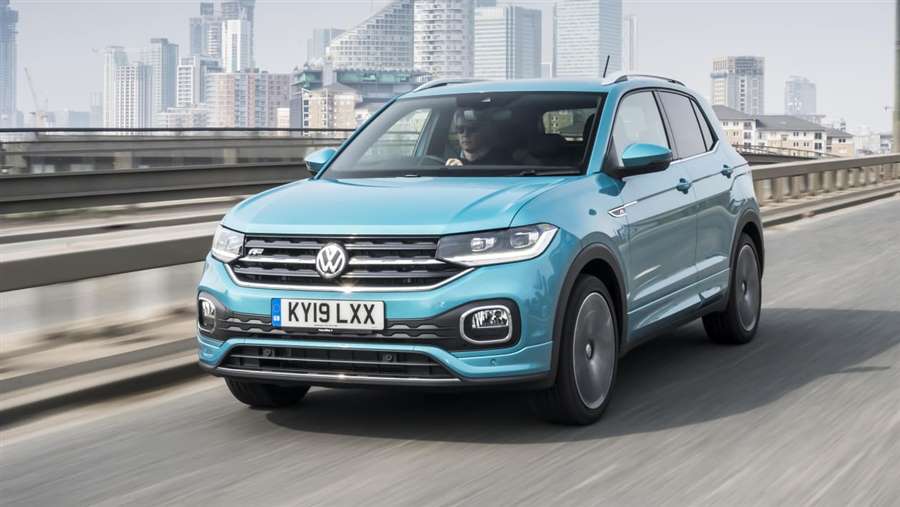
For its first foray into the hotly contested small SUV class, VW has given the T-Cross some bold details. Its rear lights are surrounded by a thick, black swathe of trim, while the headlights are joined by a chrome strip that goes straight across the middle of the grille. Underneath, there are fog lights and daytime running lights, which look similar to those on the T-Roc, while T-Cross lettering stretches across the bootlid. Roof rails and black plastic wheel arch extensions give the T-Cross a rugged look.
Best small SUVs
Small SUVs have already been available for a few years now, but the T-Cross is looking to take top honours - thanks in part to the badge on the front. That alone will sell the car to many buyers, although it’s clear throughout that the T-Cross is aimed at the premium end of the class.
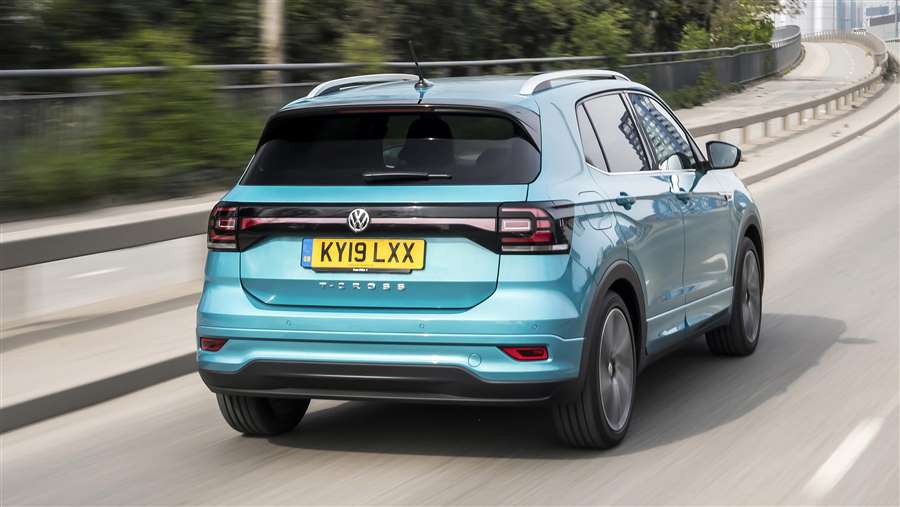
It combines VW’s typical sturdiness and planted feel with light steering that’s perfect in tight city streets. The T-Cross continues to drive well at speed without feeling too twitchy, which can be a side effect of light steering. It’s refined even up to motorway speeds, and keeps its composure over most bumps and small potholes. VW has certainly prioritised comfort over sportiness, which is what most small SUV buyers will prefer.
The 1.0-litre three-cylinder engine can occasionally feel sluggish below 2,500rpm, which means you’ll have to rev it hard sometimes - when joining a motorway, for example. Volkswagen introduced a punchier 148bhp 1.5-litre petrol engine at the start of 2020 but in truth, the 108bhp 1.0-litre engine will suit most buyers. The T-Cross has the option of a smooth DSG automatic gearbox - it’s a bit more expensive, but could be a great choice if you do most of your journeys in stop-start traffic.
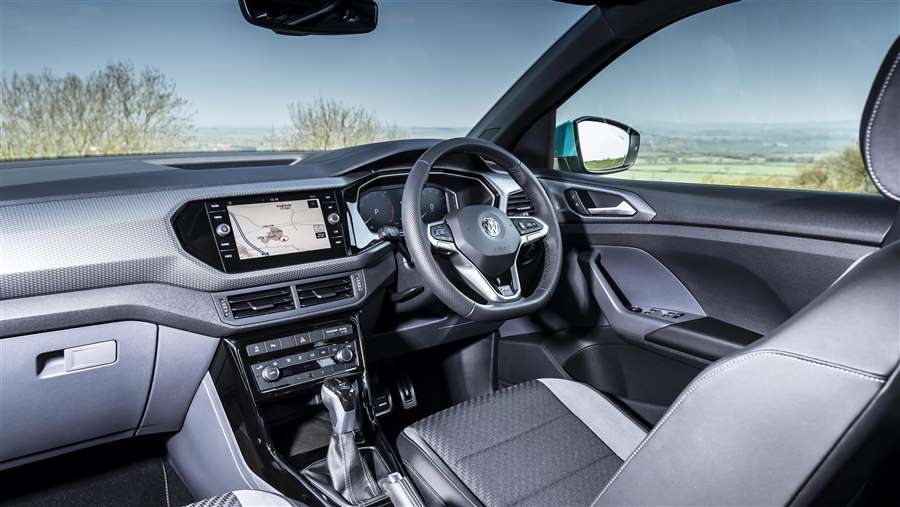
The 1.0-litre petrol engine is offered with either 94 or 108bhp but whichever you pick it will return around 49mpg. This is pretty similar to most of its rivals but the DSG automatic does increase fuel consumption to around 45mpg. You’ll get a similar figure from the 148bhp petrol engine. A diesel engine was briefly available but it was expensive and wasn’t much more economical than the smaller petrol options.
Despite its size, the T-Cross offers space for five, and adults should be comfy in the outer rear seats thanks to lots more headroom than in the Polo. The rear seats slide forwards and backwards, so you can choose whether you want more space for passengers or luggage. It has a big boot, regardless of where you have the back seats, while those in the front will enjoy a classy dashboard with a standard eight-inch infotainment touchscreen.
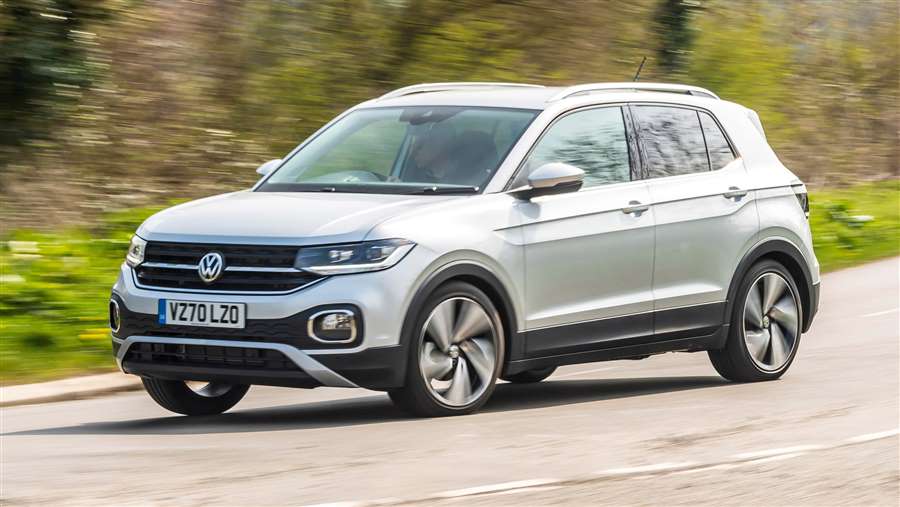
The Volkswagen T-Cross certainly isn’t the first small SUV, but it’s now one of the ones to beat. It offers an impressive blend of style, comfort and peppy engines.
Volkswagen T-Cross SUV - MPG, running costs & CO2
The T-Cross is economical and should have excellent residual values
There was a time when SUVs were typified as being ‘gas guzzlers’, but the latest wave are often almost as economical as their hatchback counterparts. The Volkswagen T-Cross, which shares its engines with the Polo hatchback, should be very economical to run, even though it only comes with petrol power. It’s not a heavy car, despite its SUV bodystyle, and only comes with two-wheel-drive.
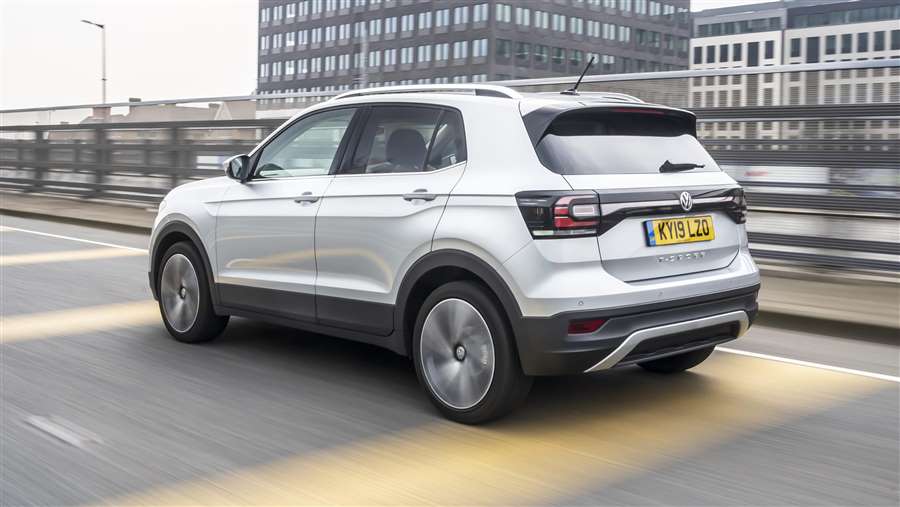
Many buyers are tempted by the VW badge on the front, and this means the T-Cross is set to offer great residual values - it should lose less of its value than some other cars in the same class.
Volkswagen T-Cross MPG & CO2
It's no longer possible to spec the Volkswagen T-Cross with a diesel engine, but the 1.0-litre turbocharged petrol engine is cheaper and should be economical enough for most people. Available on four of the six current trim levels, the entry-level 94bhp version returns up to 49.6mpg, the same as the 108bhp version (offered on all but S trims). Petrol versions of the Renault Captur manage around 45mpg, so you’ll struggle to notice a difference between the two cars at the pumps.
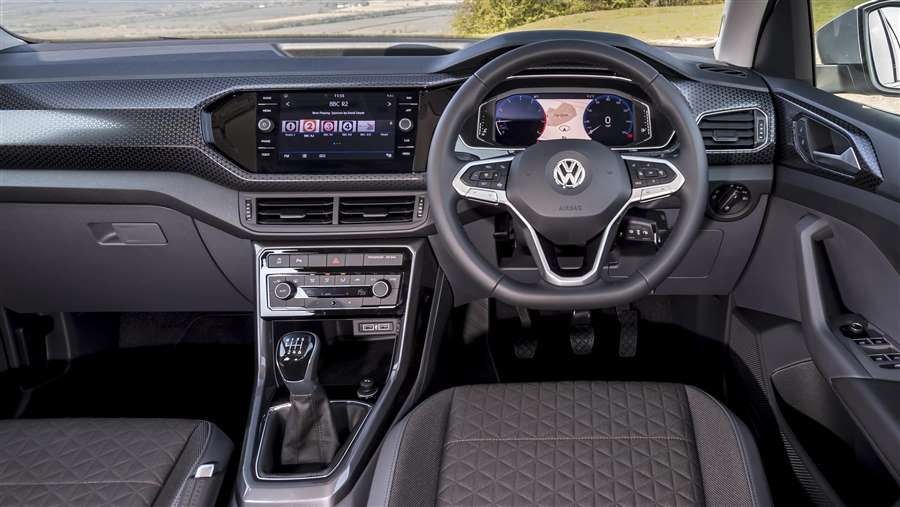
Volkswagen now sells the T-Cross with a more powerful 1.5-litre EVO TSI petrol engine. It has cylinder deactivation (under light throttle it’ll run on just two cylinders) to save fuel, but is only available with the DSG automatic gearbox. You can expect 47mpg from this engine, which is still pretty reasonable and even a little better than the claimed 44.8mpg figure of the 1.0-litre engine with an automatic gearbox.
A 94bhp diesel engine has previously been available but it made up a tiny proportion of sales. That’s not surprising when you consider it only offered around 5mpg more than the frugal petrols but cost a lot more to buy.
The T-Cross should be affordable to fill up and all variants are subject to the standard rate in VED (road tax) from the second year of ownership - the first year’s tax is usually rolled into the on-the-road price of the car.
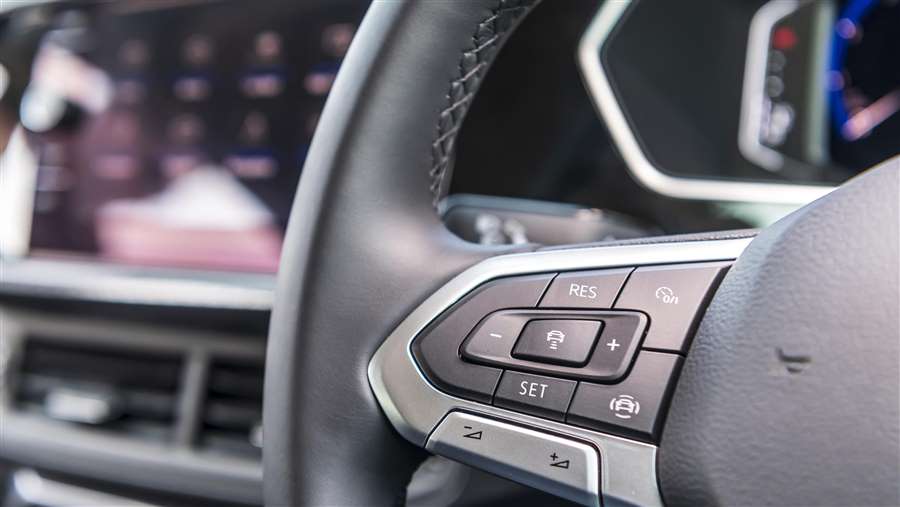
Insurance groups
The T-Cross should be affordable to run, with insurance starting in group 8 for S and SE models with the 94bhp petrol engine. Top-spec R-Line models occupy 11-13, but the 1.5-litre petrol engine increases this to groups 16-17.
Considering the desirable badge, it’s impressive that the T-Cross is no more expensive to insure than the SEAT Arona, which also starts in insurance group 8E for 94bhp versions.
Warranty
Like all new VW cars, the T-Cross benefits from a three-year/60,000 mile warranty, which is transferable to the next owner if you sell or return the car before the warranty expires. This warranty is fairly standard, although far from class-leading. Rivals such as the Hyundai Kona and Kia Stonic have five and seven-year warranties respectively, which is something to bear in mind if you plan to keep your car for a long time. You can buy extended warranties from VW, which work out at about £140 per year.
The T-Cross’ paint will be covered for three years, while the car also comes with a 12-year anti-corrosion guarantee.
Servicing
Servicing the T-Cross should be relatively pain-free. Volkswagen has the third-largest dealership network in the UK. Service intervals should be the same as the Polo, so you’ll have to book it in for a service every year or 10,000 miles, whichever comes first.
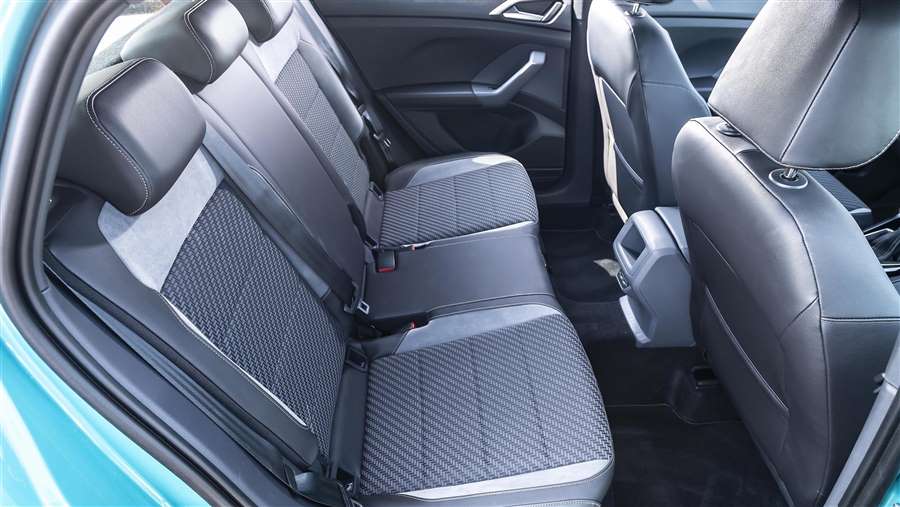
As with all VW models, you’ll be able to take out a service plan, which’ll spread the cost of your next two services over 18 monthly payments of between £15-20. You can either pay this separately, or add it to your monthly finance payments if you’re not buying the car outright.
Volkswagen T-Cross SUV - Engines, drive & performance
The T-Cross is good to drive and impressively refined
Small SUVs are unlikely to be the dream vehicle for keen drivers, but the T-Cross easily competes with the current class leaders in this regard. It drives well, with pleasingly light steering and a comfortable ride. Over most bumps and bad surfaces it’s composed, and body roll is kept to a minimum through the majority of corners.
Like many other VW Group cars, the T-Cross isn’t built primarily to excite; its handling and driving experience is composed and careful, which inspires confidence in the car. The higher driving position compared to the Polo helps with seeing further ahead, and is one of the main reasons to buy an SUV over a standard hatchback. If you're after more fun behind the wheel, consider the Ford Puma.
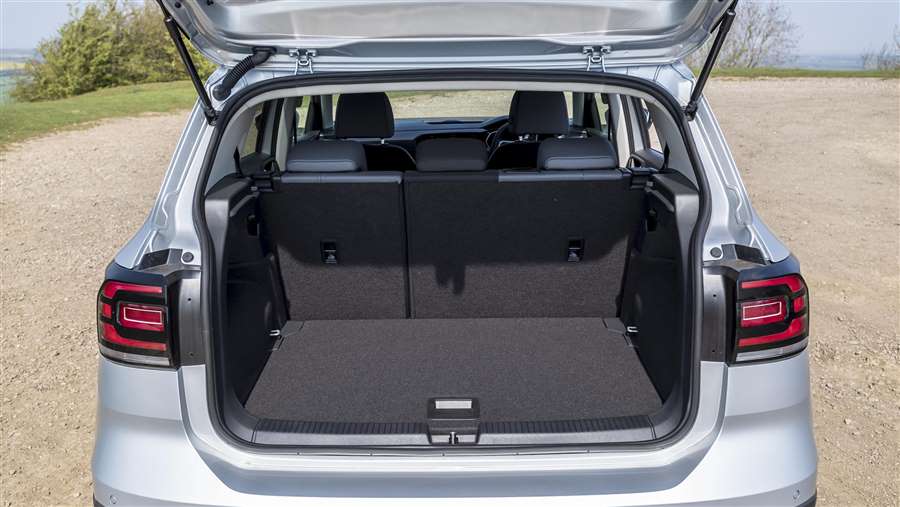
Volkswagen T-Cross petrol engines
A 1.0-litre turbocharged petrol engine is the most popular option, with outputs of either 94 or 108bhp. While the latter is essentially the engine from the Volkswagen up! GTI, the T-Cross doesn’t provide mini-hot hatch performance. However, it manages 0-62mph in a smidge over 10 seconds, or 11.5 for the 94bhp version - the 108bhp engine is our pick.
Refinement is very impressive for such a small car. In fact, it feels very mature and capable. The higher-powered version offers a six-speed manual gearbox over a five-speed in the entry version, and the 108bhp engine is available with a slick DSG automatic gearbox at extra cost.
In January 2020, Volkswagen introduced a 148bhp 1.5-litre petrol engine to the range. It’s almost as efficient as the 1.0-litre, thanks to the ability to shut down half its cylinders when you’re not pressing the throttle hard, but the 0-62mph time improves to 8.5 seconds. Its top speed is 124mph.
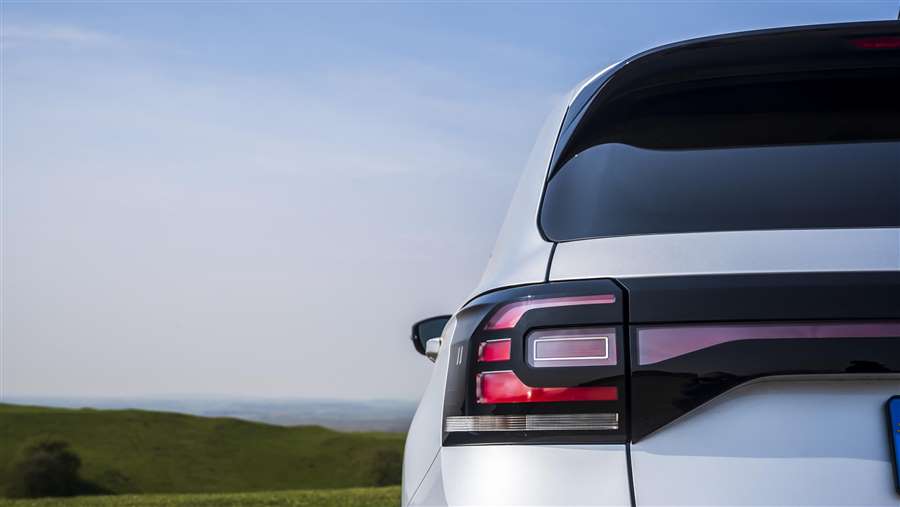
Diesel engines
A diesel engine was available for a short time but, unsurprisingly, slow sales saw it withdrawn. The 94bhp 1.6-litre engine has been removed from the Polo range too. It prioritises efficiency over performance, and 0-62mph takes almost 12 seconds. No hybrid version is currently available to rival the Hyundai Kona or Renault Captur E-Tech, which is a shame. However, Volkswagen is planning to electrify most of its range, so a hybrid or pure electric version could be in the pipeline.
Volkswagen T-Cross SUV - Interior & comfort
The interior is a strength of the T-Cross, with plenty of tech on all versions
The VW T-Cross is one of the most expensive small SUVs available - for the price of the top-spec model, you could get a bigger and still well-equipped Volkswagen T-Roc - but the interior feels far more premium than rivals such as the Kia Stonic, Ford Puma and SEAT Arona. For buyers who don’t need a larger SUV but value premium materials, the T-Cross makes sense.
In terms of comfort, the T-Cross surpasses rivals too. It’s incredibly quiet on the move, making the cabin feel serene and relaxing. The T-Cross is well damped, ironing out most bumps - only large potholes will send a jolt through the cabin. There are many larger, more expensive SUVs that don’t manage to be so comfortable.
Volkswagen T-Cross dashboard
Volkswagen is known for its upmarket interiors, which is why many customers don’t mind paying a bit extra for a car with a VW badge. The T-Cross is no different, as it feels more plush and expensive inside than many small SUVs. While there are some scratchy, hard plastics on show, the main dashboard fascia lifts the cabin. If this silver trim doesn’t appeal, you’ll be able to choose a range of different options and even match the dashboard to the exterior paint colour.
Just like in the Volkswagen Polo, the build quality in the T-Cross is impressive. Even though this car will be one of VW’s least expensive models, it feels solid and well built, and the controls feel reassuringly chunky. There are stylish silver inserts on the steering wheel and a gloss black surround for the lower centre console, which adds to the feeling of quality. VW has also chosen to stick with a manual handbrake, instead of switching to an electric version.
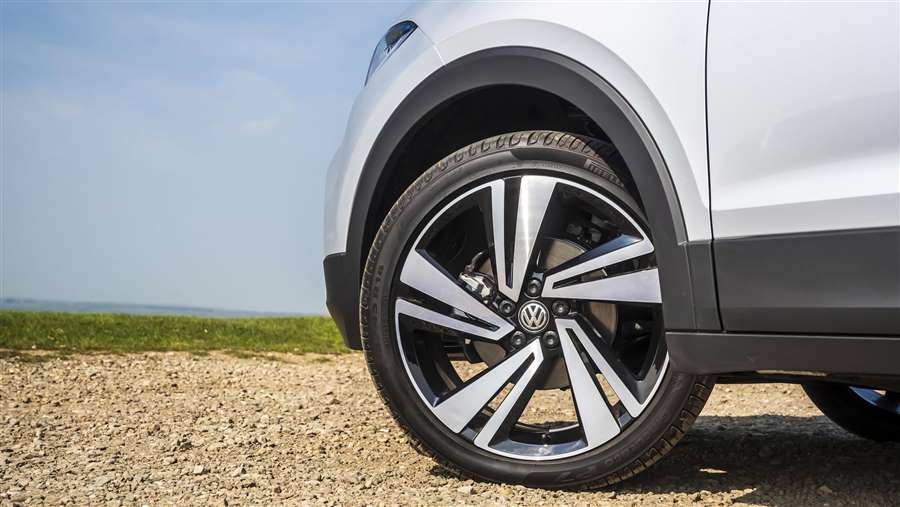
Equipment
The T-Cross does well for standard equipment, with an eight-inch full-colour infotainment system fitted across the range. The car offers a full suite of connectivity including Bluetooth, USB and Apple CarPlay (this is standard on all but the base model), plus DAB radio.
The kit list doesn’t stop there. Air-conditioning and a variety of safety systems are included on all models, while top versions come with VW’s crisp configurable digital instrument cluster (shown in these pictures). In this R-Line model, customers benefit from dual-zone air conditioning, sat nav and parking sensors at both ends. SEL and R-Line models get automatically adjusting LED headlights, plus LED tail-lights and daytime running lights.
Options
There aren’t too many optional extras to choose from in the T-Cross brochure, perhaps because it’s rather well-equipped in the first place. However, you can choose from a variety of different alloy wheels (on the mid-spec trim levels) and paint colours to personalise the car to your tastes. Design packs are available across most of the range should you wish to add further splashes of colour and different interior upholstery.
VW T-Cross R-Line seats22
Once you’ve chosen these, you can pick options like a reversing camera, park assist and keyless entry. Electric folding door mirrors and high-beam assist can also be picked on VW’s smallest SUV, while packs include a Beats audio pack and a winter pack consisting of heated seats, heated windscreen washer nozzles and a washer fluid level indicator.
The options list is slightly different if you choose the entry-level ‘S’ model, however. Here, you can opt for front and rear parking sensors, front fog lights, tinted rear windows, sat nav, app connectivity and an extra security system.
Technology
As well as the entertainment technology listed above, the T-Cross gets a lot of safety features as standard. All models feature extended pedestrian and cyclist protection, front assist, auto emergency braking, tyre pressure monitoring and automatic emergency services contact in the event of a collision.
On SE models and above, you’ll also get blind-spot monitoring, lane-keep assist, a driver alert system, adaptive cruise control and hill start assist.
Volkswagen T-Cross SUV - Practicality & boot space
The T-Cross is more spacious and flexible than the VW Polo
You might look at the T-Cross and think that it’ll barely be big enough to accommodate the weekly shop, but its small-looking proportions disguise practical interior space. The boot, while not the biggest in class, is a pleasant surprise, as is the thoughtful touch of rear seats that slide forwards and backwards.
The extra headroom afforded by the taller body will be a big draw to many customers, as it makes the T-Cross that bit more practical than the Polo. There’s also a similar amount of headroom as you get in the Ford Puma and more than in the Renault Captur.
Volkswagen T-Cross interior space & storage
The T-Cross is quite a practical car generally, not just in the context of its compact size. It’s slightly longer than the Polo and 107mm taller, which makes it feel considerably more spacious inside than VW’s supermini hatch. Large windows allow the cabin to feel light and airy.
Cleverly, the rear seats can slide backwards or forwards, depending on how you want to divvy up cargo and passenger space. This trick is usually offered on much more expensive cars, or people carriers that prioritise substance over style. As a result, the T-Cross is very versatile, despite the distance between its wheels (the wheelbase) being identical to the Polo.
You’ll want to keep the rear seats pushed as far back as they’ll go if you regularly carry passengers, as legroom vanishes with the seats fully forward.
Boot space
Creating an SUV based on a Volkswagen Polo may divide opinion, but it certainly benefits boot space. The T-Cross offers between 385 and 455 litres with the rear seats up, depending on where you have them, but even the smaller number is five litres bigger than the boot in the Volkswagen Golf. With the rear seats pushed forwards as far as they’ll go, the boot is no longer flat - there’s a large channel where the seats were, which your possessions will fall into if they aren’t secured.
Flip those seats down and you’ll have 1,281 litres to fill - plus, you can fold the front passenger seat flat to accommodate longer items. In this configuration, the T-Cross offers almost as much space as a small van, which means it’s perfect if you occasionally need lots of luggage space but only have a small parking bay.
In terms of boot space, the T-Cross leaves many of its rivals behind. The Hyundai Kona offers up to 361 litres seats up and 1,143 litres seats down, the SEAT Arona offers 400 litres in five-seat mode, while the larger Renault Captur matches it almost exactly. In fact, with the seats pushed forward, the T-Cross offers slightly more space than the larger T-Roc.
Towing
It’s unlikely that many T-Cross owners will use their car for towing, and Volkswagen says that the 1.0-litre petrol models, and the 1.6-litre diesel models will safely tow a braked trailer weighing up to 1,100kg. The more powerful 1.5-litre petrol engine is the most capable model of the range, with the ability to tow a braked trailer up to 1,200kg in weight.
Volkswagen T-Cross SUV - Reliability & safety
Reliability untested but the T-Cross received a five-star Euro NCAP rating
Volkswagen has a good reputation in the UK, which is another reason why buyers flock to the brand. Its position as a premium mainstream manufacturer is appealing, and is backed up by reliable cars, a big dealership network and mostly satisfied customers. Even high-mileage cars hold their value much better than rivals in the classifieds. VW tends to post reasonable results in Driver Power surveys but this slipped somewhat in 2020. Nevertheless, the T-Cross could occupy one of the higher spots in the next couple of years.
The brand is also perceived as a builder of safe cars. All models come with a five-star Euro NCAP rating, and there is plenty of standard safety technology that would be optional extras on some other SUVs.
Volkswagen T-Cross reliability
It’s too early for any specific reliability feedback for the T-Cross but VW fell to 19th out of 30 manufacturers in our 2020 Driver Power survey (still ahead of BMW and Mercedes) while the Golf and Tiguan finished 50th and 51st out of the UK's top 75 models respectively.
Safety
Euro NCAP has given the T-Cross a full five-star score. It scored 97% for adult occupant safety, 86% for child safety, 81% in the pedestrians and other vulnerable road users category and 80% for on-board safety tech. The T-Cross features a range of passive and active safety systems to protect its occupants and pedestrians.
These include pedestrian and cyclist protection, automatic emergency braking, front assist and a speed limiter. More expensive trim levels add features like adaptive cruise control, hill start assist and blind-spot monitoring, which help the T-Cross achieve a maximum rating.
(carbayer.co.rs)


